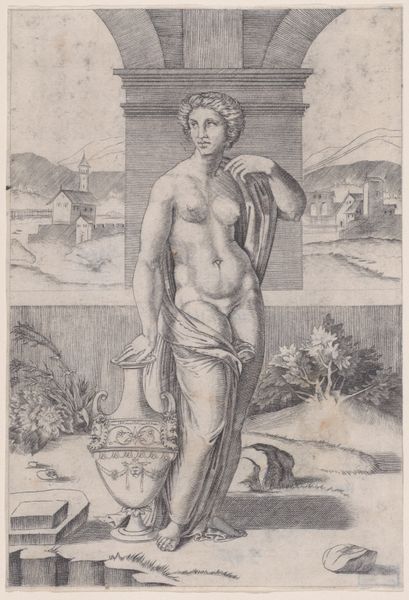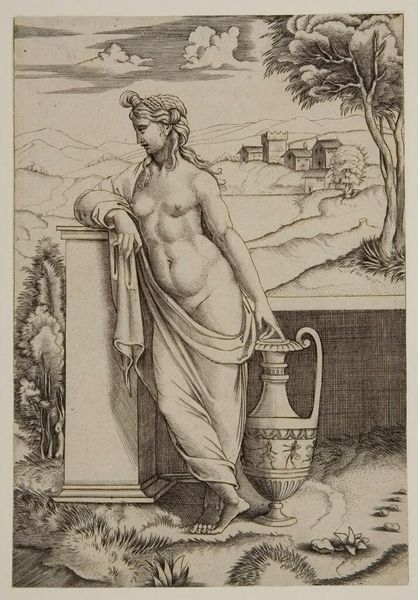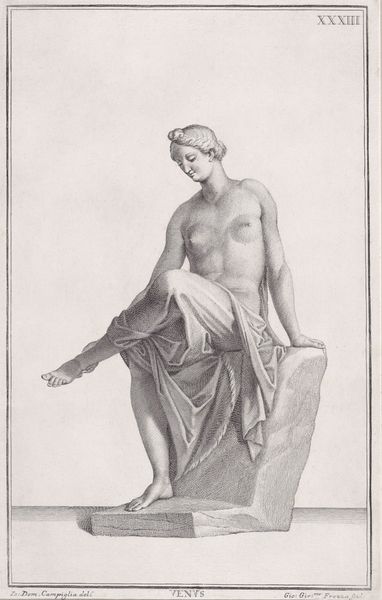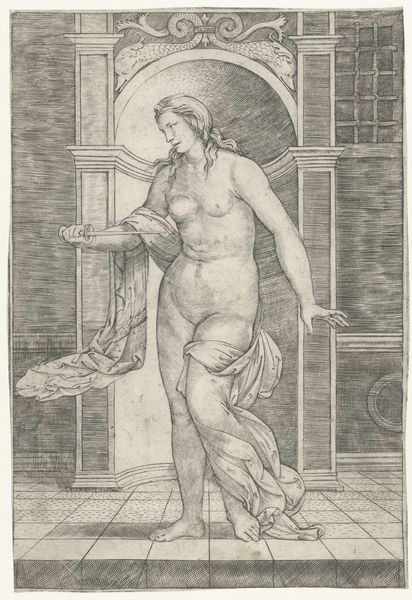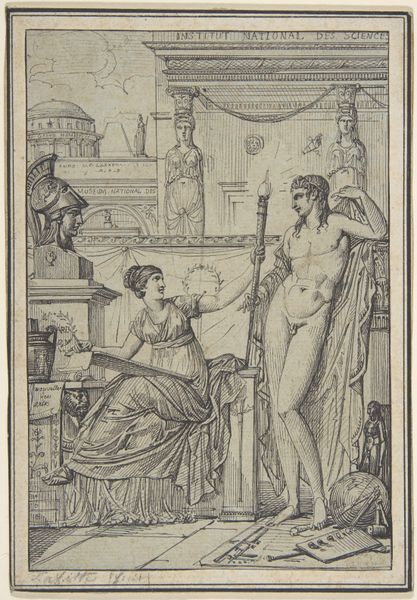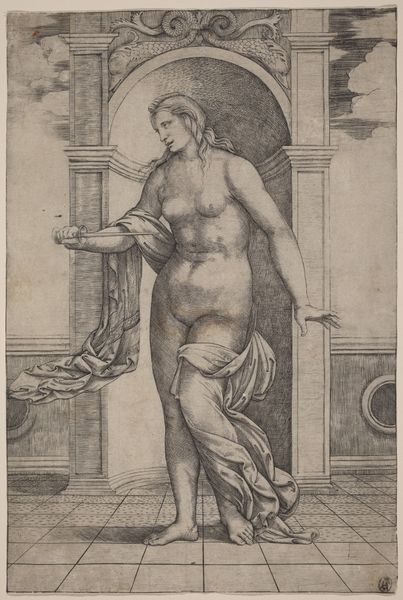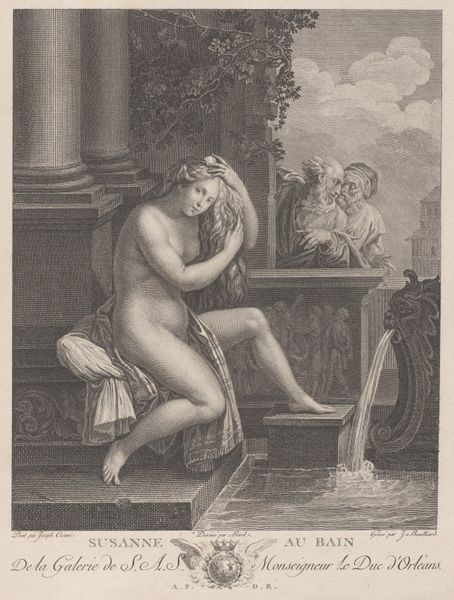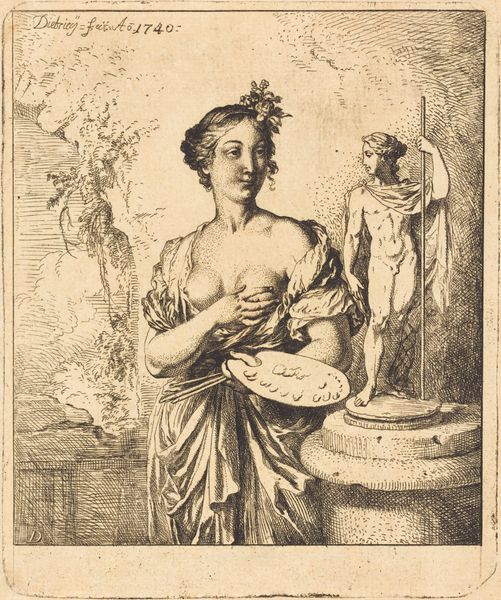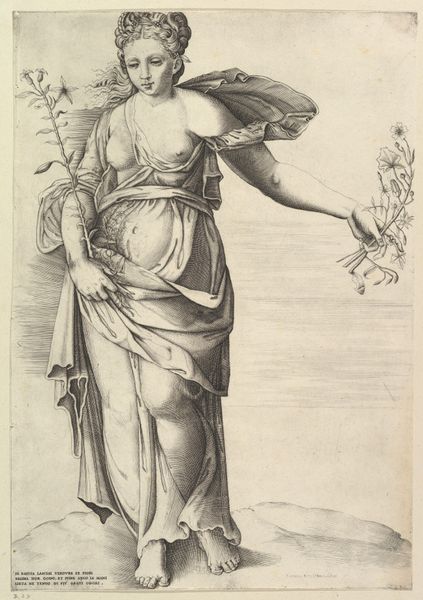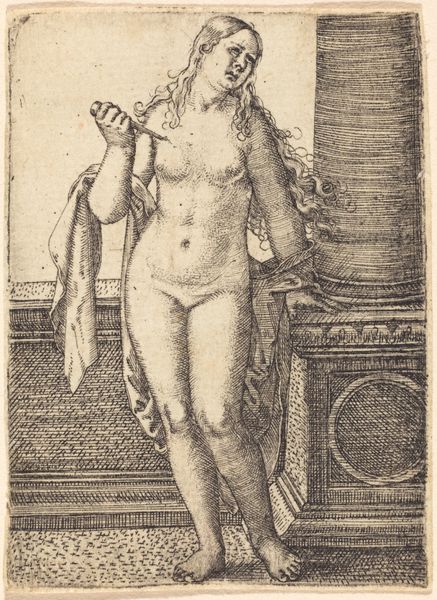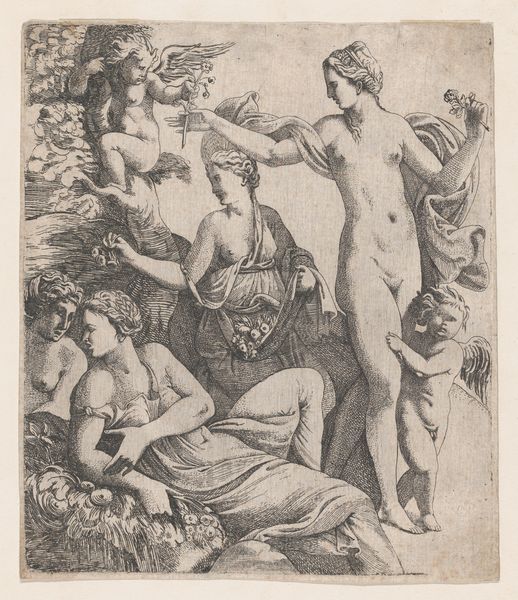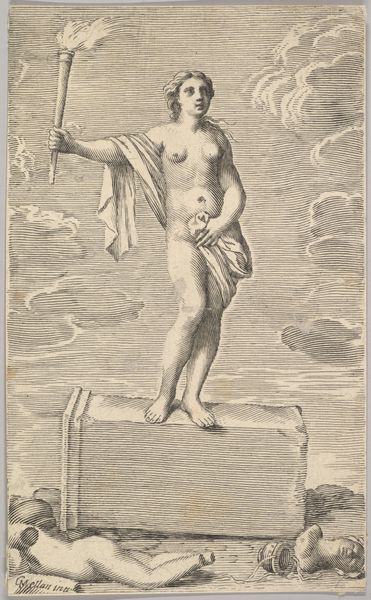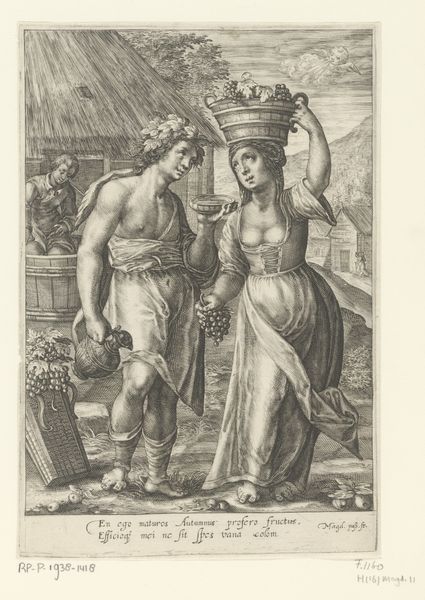
drawing, print, engraving
#
portrait
#
pencil drawn
#
drawing
# print
#
landscape
#
figuration
#
pencil drawing
#
portrait drawing
#
italian-renaissance
#
nude
#
engraving
Dimensions: 8 7/16 x 5 13/16 in. (21.4 x 14.7 cm)
Copyright: Public Domain
Curator: This engraving, likely printed between 1514 and 1536, is titled "Woman Standing near a Vase" and is attributed to Agostino Veneziano. Its current home is the Metropolitan Museum of Art. The immediate impact, however, is quite interesting; the stark lines, the slightly off-kilter perspective... it all feels strangely modern. Editor: There's a fascinating tension between the classicized figure and that sense of… I wouldn't say unease, but perhaps a melancholic stillness. Let's consider the gaze – averted, almost introspective. This print speaks volumes about Renaissance ideals and their potential contradictions, situating female representation within debates of power, beauty, and agency. Is she an allegory of virtue, or merely an objectified body within a landscape? Curator: Agreed. The nude figure's pose beside both the architectural plinth and ornate vase compels a close look at artistic conventions of the time. The engraving medium, of course, impacts its texture and availability to a wider, early 16th-century audience. What impact did this mechanical process have on the circulation and understanding of classical forms? Was it simply about artistic merit or was there something fundamentally political about distributing images such as this at the time? Editor: Exactly! Printmaking's democratization of imagery throws existing power structures into sharper relief. By examining this work through feminist and cultural lenses, we can tease out ideas of how gender, status, and artistic prowess were being negotiated. Further, what labor underpinned it? Who was creating the inks, prepping the metal plate, operating the printing press? How did that impact the value? Curator: It all connects—the labor involved, the choices around the female form. The surrounding idyllic scene is rendered as an Italian Renaissance ideal that then underscores this figure's perceived classical ideals, but with what degree of success? The interplay between her relaxed pose and classical allusion sets up some tensions we can perhaps trace and apply to contemporary notions of beauty today. Editor: Precisely. So, by questioning whose beauty is being depicted and consumed, how these visual cues are made accessible by printmaking, we expose its deep implications about artistic practices and social hierarchies of that era. Curator: I came into it wanting to reflect on classical traditions of Italian Renaissance ideals of beauty but have found it more valuable for discussions about modern constructions of identity and perception today. Editor: For me, it has renewed a fascinating interest in the physical process through which such a discussion took place at this point in history. Thank you for sharing your perspective.
Comments
No comments
Be the first to comment and join the conversation on the ultimate creative platform.
